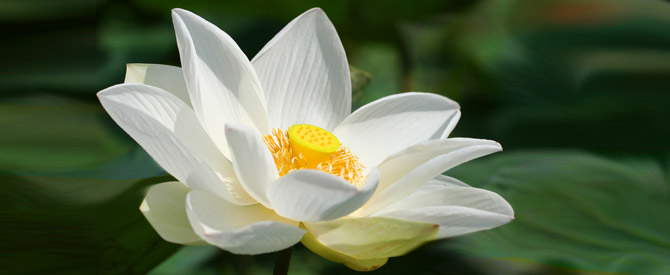The highest spiritual discipline is identifying with the Self, the inner witness in you. This is the ever-present observer that is constantly aware of the thoughts, words and actions done by the lower self—the ego-personality you.
Shifting your focus and identification to the real Self within is the highest spiritual discipline because attaining oneness with the Self is the ultimate goal of life.
All other goals will come to naught along with our possessions, relationships and accomplishments. None of these matter in the grand scheme of things.
We are spiritual beings on an evolutionary journey in consciousness where we outgrow our identification with the personality self and come to realize our true spiritual nature. This is the very purpose of life
Not knowing this real “I” is the cause of all suffering because when we identify with the changing personality, we think we are finite and mortal beings always seeking happiness from the world. The reality is that our real nature is infinite, eternal and bliss.
Since identifying with the Self and being one with it is our goal, it is important to understand identification. Identification is taking on the qualities of something or someone else on yourself.
For example, if a close friend or family member whom you love experiences hurt, you feel it just as much too. Your love connects you to that person and makes you feel what he or she feels. Identification ties you emotionally to what you love.
If the highest spiritual discipline is identification with the Self, we must learn to love the Self. Right now, identifying with the Self happens every now and then when we remember or when we sit for meditation. There is no real love for the Self. We practice being the inner witness to gain temporary peace and detachment from the drama of life.
Our goal is to identify with the Self as constantly and completely as we now identify with our human personality.
We are unable to sustain an inner awareness of the Self for any significant period of time because of the impurities in the mind. These impurities express as negative thoughts, emotions and habits.
Examples of impurities are selfish desires, anger, greed, jealousy, pride, being judgemental of others, carelessness and the tendency to procrastinate. These impurities perpetuate our identification with the personality and everyday things.
A powerful remedy for removing impurities and increasing our identification with the Self is to bring in thoughts of the divine.
What is the divine and how is it connected to the Self?
A discipline to prepare for the highest spiritual discipline
Vedanta tells us that the whole of creation comes from one divine source and is its one essential truth or reality.
The divine has many names—God, the creator, Lord, the Universe, Krishna, Rama, Elohim, Allah, and so on.
God or the creator represents the one divine essence in all things and beings in creation. Since we are creatures in creation, we too have this essence or God within us.
According to Vedanta, God is not merely in you, it is your own essential nature—the Self.
There are no two divine truths. There is only one God or Self. God alone is manifesting as this entire cosmos. You and I, and all things and beings are different expressions of that one truth or God.
Since thinking of ourselves as God in human form is too far a stretch for us, worshipping It as a higher power with a name and qualities helps to identify with It and love It.
To achieve this end, religions use various symbols, images and idols to represent the divine creator. We can use them as placeholders for our worship.
Remember, these outer symbols merely represent the divine. We don’t worship them as the divine. They provide the means to focus our mind and worship.
 We worship God not to please an entity far away or separate from us; we worship to advance our inner peace and movement towards our own spiritual unfoldment.
We worship God not to please an entity far away or separate from us; we worship to advance our inner peace and movement towards our own spiritual unfoldment.
Worshipping God and seeking a connection with It is an indispensable preliminary discipline to prepare for the highest spiritual discipline of seeking oneness with the Self.
This is true whether you consider yourself religious or spiritual. We must have love for the Self to be able to identify with it.
But the qualities of the Self are rather abstract and hard to emotionally connect to, let alone love. For example, the Self is infinite, eternal, pure consciousness, changeless, the Supreme Reality, the Truth and the substratum for the world.
Whereas, when the Self is seen as the Creator, God or Lord, we can give It qualities and connect with It. So we say God is the embodiment of love, goodness, kindness, mercy, compassion, nobility, beauty and purity. This almighty and omniscient Creator can help us and relieve us of our sorrows.
Seeing God in this light helps us grow in our love and identification with it. The more we connect to the divine, the less our focus on the world and worldly goals. This is why remembering and worshipping God is a great mental purifier. We must practice this until thinking of God becomes second nature to us. Read 9 ways to develop divine devotion and more about the path of devotion in my book.
The journey in stages
The highest spiritual discipline is seeking our oneness with the Self. Our journey inward begins with seeing the divine Self or God as a being separate from us. As we make deeper connections with It, God starts to come closer. Our love starts to grow, and we feel Its presence within us.
Eventually, through long practice, faith, and surrender to God, the mental impurities are cleansed, and we begin to advance inwardly in meditation. We become better able to identify with being the inner witness or the Self.
Our practice is enhanced by praying to God for the inner poise and ability to stay identified with the Self. We will come to the final stage in our journey when God and the Self will merge as one and we will experience it as our own true blissful Self.
Like this post? Sign up for the free fortnightly Spiritual Solutions Newsletter and receive the latest articles, news and updates in your email inbox!










